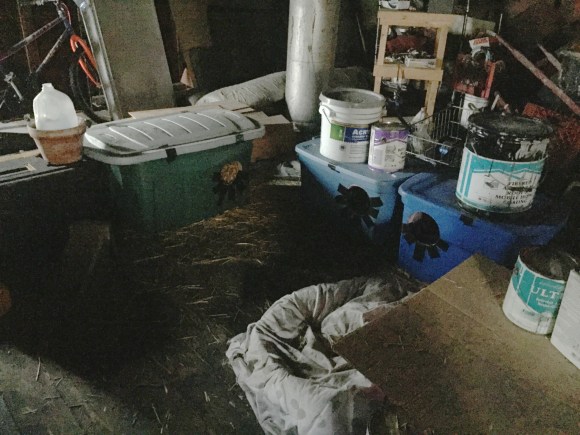Wound Treatment and Recovery for Feral Cats
Maxfield was trapped in Englewood this week and brought into PAWS Chicago’s clinic for their TNR package. They found a horrific wound on his neck.
Georgie from Chicago TNR and Cynthia trapped about a dozen cats in this particular alley so far. Maxfield was one of them, and the clinic discovered his injury while under anesthesia for his TNR surgery.
This was most likely caused by an abscess from a bite wound. Per his paperwork, there was crusted hair over the wound, so they cleaned it up.

Then he was given a shot of Convenia antibiotics to offset infection, and they recommended recovery for 7-10 days. PAWS Chicago performed this medical service free of charge. They are the only vet clinic in the Chicago area who offers this to colony cat caregivers and we are all so thankful to have this resource in the city.
I offered to recover Maxfield for George as soon as I saw his injury. Her foster room is currently occupied with a friendly cat from the same alley that she is trying to place into a rescue.
A few years ago my friend, Dave H., gave me a dog crate that attaches to a trap to safely recover feral cats that need to be confined for an extended period of time. Dave invented this set-up and we call it the feral cat recovery lounge. It’s become to be an invaluable resource for several cats I’ve recovered.

Once you attach the trap to the crate, you cover the whole set-up and allow the cat to freely move from one end to another. The food is kept in the trap so that it is easy to get the cat to re-enter the trap for transport later.

Maxfield settled right in. As soon as I attached the trap to the crate, he bolted into the crate. He decided to wedge himself next to the litter box, and hasn’t moved much since.

He hisses, growls, and bolts so far, all signs of feral behavior. He seems a bit congested, so I’ve been adding Lysine to his wet food. His appetite is good – he’s been eating the wet and dry food as soon as I leave. Because the outside temperature is pretty mild, I am keeping him in the garage with plenty of blankets and a heater to keep warm. The crate and trap are elevated off the floor with blocks of wood for circulation and so they are not just sitting on the cold croncrete floor. Nonetheless, we don’t want him too warm because we want him to keep his winter coat.
He’s doing well and I am hoping tonight he will explore the crate more. There is a second level just above his head where there’s a soft bed for him to sleep and recover.

I will keep all of you posted on his road to recovery within the next week. I’d like to thank George and Cynthia for saving his life, for PAWS’ providing his medical care, and for Jim’s help caring for him while I’m out of town for work.




































































What size dog crate and two door? where are the doors located on the dog crate ….love this set up